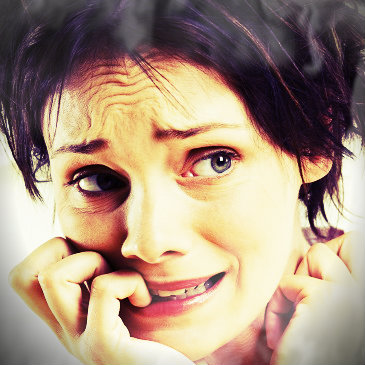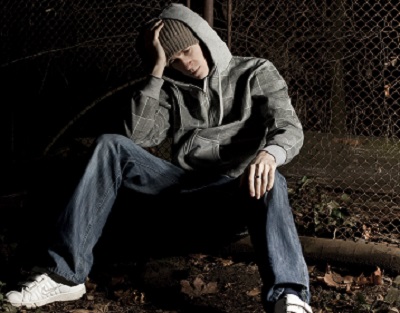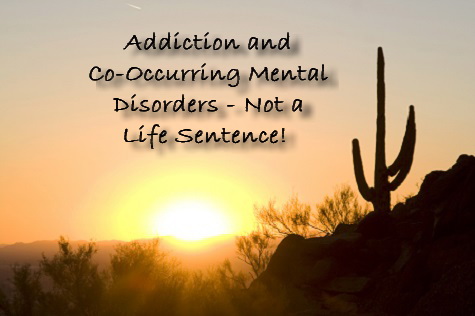Cannabis is the umbrella term for the mind-altering products marijuana, hashish and hashish oil, which come from the cannabis group of plant species. All of these products create substantial risks for physical dependence and addiction when used regularly for relatively extended amounts of time. Cannabis use also comes with a known risk for psychosis and certain other mental health problems. In a study published in August 2013 in the journal Addiction, a team of Dutch researchers looked at the relative risks for mental illness in dependent/addicted marijuana users and users unaffected by dependence/addiction. The researchers concluded that the mental illness risks in these populations differ in substantial ways.
What Exactly Is Cannabis?
 Marijuana comes from dried, non-concentrated parts of Cannabis plants such as the leaves, stems and flowers. Hashish and hashish oil, on the other hand, come from the purposeful concentration of these plant parts. All three of these cannabis-based products contain the same active ingredient, known informally as THC and formally as tetrahydrocannabinol. THC triggers changes in brain function that create the classic effects of cannabis intoxication, including altered thinking and sensory perception, a rise in pleasurable feelings, appetite increases, reduced clarity in several major areas of consciousness, and a reduced ability to move the body’s muscles in an efficient, controlled manner.
Marijuana comes from dried, non-concentrated parts of Cannabis plants such as the leaves, stems and flowers. Hashish and hashish oil, on the other hand, come from the purposeful concentration of these plant parts. All three of these cannabis-based products contain the same active ingredient, known informally as THC and formally as tetrahydrocannabinol. THC triggers changes in brain function that create the classic effects of cannabis intoxication, including altered thinking and sensory perception, a rise in pleasurable feelings, appetite increases, reduced clarity in several major areas of consciousness, and a reduced ability to move the body’s muscles in an efficient, controlled manner.
Marijuana’s Dependence And Addiction
Despite its reputation as a relatively harmless, “natural” substance, THC can make substantial alterations in a person’s long-term brain function when used repeatedly or habitually over time. These changes in function can eventually make the brain “see” the presence of THC as a chemical norm rather than a rare or occasional event. When this situation arises, the affected individual has what’s known as a physical dependence on the effects of cannabis/THC. By itself, physical dependence on a substance does not necessarily constitute a dangerous or harmful situation. However, when combined with persistent drug-seeking behaviors and other disruptive or dysfunctional actions, dependence establishes the necessary groundwork for the onset of a drug addiction.
Mental Health Risks Of Marijuana Use
While under the temporary influence of cannabis products, users commonly experience short-term symptoms that closely approximate psychosis, an altered mental state (classically associated with schizophrenia and schizophrenia-related illnesses) that primarily features delusional thought processes and/or some sort of sensory hallucination. In some cases, regular users develop a more extended form of psychosis that continues as long as a pattern of cannabis intake continues. In addition, current evidence strongly indicates that habitual cannabis users have increased long-term chances of developing diagnosable cases of schizophrenia or depression that continue to exert their effects even when a pattern of cannabis intake stops.
In the study published in Addiction, researchers from the University of Amsterdam and the Netherlands Institute of Mental Health and Addiction sought to determine if people physically dependent on cannabis have higher risks for developing mental health issues than cannabis users unaffected by dependence. They made this determination by tracking the mental health diagnoses of 252 young adults affected by cannabis dependence, as well as the diagnoses of 269 young adult, non-dependent cannabis users. For comparison’s sake, they also tracked the mental health diagnoses of over 1,000 non-cannabis-using young adults. The researchers did not attempt to differentiate issues of cannabis dependence from issues of cannabis addiction.
Effects On Mental Illness In Dependent vs. Non-Dependent Marijuana Users
After reviewing the gathered data, the researchers found that both dependent and non-dependent cannabis users have a higher rate of mental illness than people who don’t use cannabis at all. They also found that dependent and non-dependent cannabis users are similar in most ways and share comparable patterns of general cannabis use, patterns of other forms of substance use and histories of problematic or traumatic childhoods. While dependent cannabis users have a higher overall rate of mental illness than non-dependent users, non-dependent users have higher rates than dependent users for illnesses called externalizing disorders, which include attention-deficit/hyperactivity disorder (ADHD), oppositional defiant disorder and conduct disorder. Conversely, dependent users have particularly high rates for illnesses called internalizing disorders, which include mood disorders (depressive and bipolar illness) and a range of conditions referred to together as anxiety disorders.
Most of the difference in the mental illness rates between dependent and non-dependent cannabis users disappeared when the authors of the study published in Addiction took certain secondary factors into account, including the use of other substances and the presence of traumatic or problematic childhoods. However, even with these adjustments, dependent users still have higher illness rates than non-dependent users. Except for the spike in their rates for ADHD, oppositional defiant disorder and conduct disorder, non-dependent cannabis users have mental health profiles that closely resemble the profiles found among people who don’t use cannabis.
Bipolar disorder is a mental illness that causes significant mood swings. It affects as much as two percent of the population and first manifests primarily in the late teens and early 20s. Although the severity and types of mood can vary dramatically among patients, the most common example of bipolar disorder is a cycling between periods of happiness and sadness, often at extreme levels (i.e. euphoria vs. despair). Although counseling can help patients learn how to identify their distinct moods, as well as the things that trigger each mood swing, many patients will also benefit from some sort of medication to help dampen negative symptoms and neutralize moods.
 It is now pretty obvious that people who are taking prescription medications, including bipolar medications, should refrain from drinking alcohol or using recreational drugs as these substances can negatively interfere with the proper functioning of the medication. In some cases, the prescriptions and other substances can negatively interact to the point of overdose or death.
It is now pretty obvious that people who are taking prescription medications, including bipolar medications, should refrain from drinking alcohol or using recreational drugs as these substances can negatively interfere with the proper functioning of the medication. In some cases, the prescriptions and other substances can negatively interact to the point of overdose or death.
The Importance Of Identifying Signs Of Substance Abuse In Bipolar Patients
Unfortunately, due to the nature of the disease, some bipolar patients are unable to refrain from using alcohol or drugs even when they are taking prescription medication for their illness. In fact, roughly half of all patients with some form of bipolar disorder also have a drug or alcohol problem. Thus, when treating a patient who has bipolar disorder, mental health professionals must be vigilant in identifying signs of substance abuse or alcoholism as the two illnesses tend to go hand in hand.
Scientists have yet to discover a definitive explanation for the high incidence of substance abuse among bipolar patients. In fact, the real explanation likely entails a combination of factors. For instance, genetics may play a pivotal role — a family history of substance abuse plus bipolar disorder increases a person’s risk of having both diseases. Further, bipolar disorder can be a tough illness to treat. Although certain medications have been shown to be successful in alleviating certain bipolar symptoms in many patients, there is currently no cure for the disease and no one magic medication that renders all patients symptom free. As such, many patients use drugs and alcohol as a way to escape the symptoms of or fallout from the disease. This phenomenon is known as “self-medicating” and is often found in patients with the more debilitating mental illnesses, including bipolar disorder.
It turns out that doctors must be especially vigilant when it comes to identifying substance abuse in female bipolar patients. Studies show that females suffering from bipolar disorder are several times more likely to abuse alcohol than men with bipolar disorder. Although men with bipolar disorder also have a higher incidence of alcoholism than men without bipolar disorder, the rate is nowhere near as high as with women.
Factors For Bipolar Disorder
While it could certainly be true that bipolar patients have a higher predisposition to addiction than non-patients, both family history and the fact that bipolar patients tend to self-medicate with drugs and alcohol is more likely the culprit behind such a high rate of alcoholism. Researchers at UCLA conducted a study of roughly two hundred and fifty bipolar patients who were being treated at UCLA on an outpatient basis. The results of the survey showed that the males with alcohol problems were more likely to have a history of alcoholism in their families than males without such alcohol problems.
However, female participants with alcohol problems did not report similar rates of family alcohol problems. Instead, these patients reported co-occurring issues with anxiety and depression. Thus, researchers hypothesized that women bipolar patients were more likely to self-medicate than their male counterparts. Unfortunately, research also suggests that women are less likely to seek help for drinking problems than men. This puts female bipolar patients at high risk not only for alcoholism, but for untreated alcoholism.
Read More About Addiction And Mental Health – There Is Hope!
Four days after Lindsay Lohan was released for her latest effort at rehab, and just as her latest film, “The Canyons,” is airing on limited release, the 27-year-old starlet was invited to sit down with Oprah as part of OWN’s Oprah’s Next Chapter series. The Aug. 18, 2013, interview commences before an eight-part docu-series, airing in 2014, in which OWN will follow the actress’ life.
“The Canyons” is a provocative, independent Paul Schrader film—an edgy erotic thriller. While the film is receiving mixed criticism, its star actress is receiving excellent reviews for her role. IndieWire called “The Canyons” one of the “50 Indie Films We Want to See in 2013.” Lohan may be, as Oprah describes her in the interview, “both an adjective and a verb for child-star-gone-wrong” but it cannot be said that the famous young actress lacks talent.
Candid Lohan
What Oprah was hoping for, along with millions of viewers, was a new Lohan—an open and candid one. Dressed in a bright tangerine dress, slick ponytail, and with nude lips and smoky but subtle daytime eyes, Lindsay did not disappoint.
“I’m an addict,” the young actress said with no hesitation.
Multiple Addictions
She explained that her addiction is to alcohol, which had served as a gateway to other things, like cocaine. Lohan told Oprah that she’d used cocaine 10 to 15 times, always snorting it. In the past, she’d claimed to have used cocaine only a few times, but said she was scared then of admitting the truth and being judged. Lohan told Oprah that cocaine was not something she enjoyed—she always felt bad the next day—and that she’d used it because it allowed her to drink more, as well as the fact that, “It was a party thing. People would have it, and I’d do it.”

Courtesy of: http://www.nydailynews.com
On the prescription side, Lindsay admitted to having felt reliant on Adderall, and that giving it up might be her biggest challenge. She told the talk show host that she hadn’t used Adderall like many young women and celebrities do to keep weight down or as a stimulant, saying she could eat normally and sleep while using the prescription stimulant. She stated that she had been prescribed Adderall for ADHD and that it had helped her feel “grounded,” but that she is noticing how much calmer she feels without the drug. Lohan explained that she is now learning to feel grounded on her own for the first time, without the assistance of substances.
Fame and Partying at a Young Age
Oprah asked the actress about all the chaos in her life, starting with becoming a star at the age of 12 with the release of “The Parent Trap,” the remake of a 1961 Disney film about twins separated by their parents who find one another and conspire to bring their family back together. When “The Parent Trap” was released, Lohan became instantly famous, and only a handful of movies later, at just 19, she was making $7 million per picture. Paparazzi were following the starlet’s every move and tabloids were busy reporting her partying habits, alleging that her parents were exploiting the young star and even partying with her (even when she was still a minor), revealing her father’s financial misdeeds and habit of landing in jail, as well as her parents’ presumed struggles with addictions.
Crazy Family Events
Lohan told Oprah that no one had been there to guide her and that no one had truly stepped in to help her understand or manage so much money. But she doesn’t blame her parents, not even for the episode in which her father released a screaming telephone tirade between himself, Lindsay and her mother in which Lindsay accused her mother of using cocaine. About the event, Lindsay said she’d come home late from being up too long partying and was behaving in a way she later felt deeply ashamed of. The actress told Oprah that she had lied to her father about her mother using cocaine and had done it simply to hurt her mother.
Chaotic Way
Referring to these former chaotic events and Lohan’s own descriptions of her troubled past, Oprah asked if Lohan didn’t believe she may have been addicted to chaos. She agreed that she was. “I think so. Yeah, it was a comfortable choice to me. What was chaotic to other people on the outside looking in was normal. There is something to be said about me learning to be comfortable with things just being OK.”
Regarding the jail time the young actress was sentenced to for a DUI charge, Lohan admitted that subconsciously, she believes she wanted to go. What she’d needed then was peace from the chaos and ironically, a part of her believed being sent to jail might give her that. She said, “Having all the chaos around me that I was so comfortable with, I somewhere inside knew I wanted to go to jail. And I think that that was subconsciously being put out there just by my actions, or lack thereof.”
New Realization
Lohan’s latest stint in rehab occurred by court order, but she says this time was different, that she is different. Although the judge required that she go, she didn’t fight it like she had in the past. She explained to Oprah that those who worked at Betty Ford and Cliffside Malibu (she spent time in both) must know something she didn’t. She referenced Albert Einstein’s definition of insanity: “Doing the same thing over and over again and expecting different results.” Regarding the judge and the healthcare providers at Betty Ford and Cliffside Malibu, Lindsay said, “I probably need to shut up and listen. You probably do know what’s best because what I’ve been doing hasn’t worked for me in the past.”
During the interview, Lohan referenced her growing spirituality as a source of strength in her life and in her sobriety. She explained, as many recovering people do, that she has no control over the future; she can focus only on today. Regarding what she can try to do to stay well, she said remaining present, clear-headed and focused is most important. While Lohan represents that vanishingly rare breed of young, talented celebrity, privileged with fame and wealth at an early age, she is also perhaps an archetype, the shadow side of celebrity—what happens when beautiful young women are thrust into the spotlight without a hand to guide them or friends and mentors to truly trust. She has been in turn exploited and addicted, though it is too simplistic to say she is either a victim or a villain.
Comparison to Classics
While many consider her a Hollywood punch line, Lohan has the smoky voice and cool, sensual beauty of certain classic ladies of Tinseltown’s epic past. It would be easy for her world to burn up in a flashbulb second like the brilliant, beautiful lives of women who’ve come before her: Judy Garland, Marilyn Monroe, Lani O’Grady or any of the other talented women who died too soon. Although it is never easy to remain forever on the road to health and success, and rarely continuously achieved for recovering addicts, least of all for the newly recovering or for people whose lives are so closely watched and judged, we can hope for the best for this young star. She may have her best work still ahead of her.
The Next Chapter
About her “next chapter,” Lohan told Oprah, “[I’m ready] to get the thing that has made me happiest my whole life back, which is to work really hard, stay focused and prove myself. I have to regain trust in people, in my career, that had doubts, and I fully respect that on their behalf. As long as I stay honest in myself and do the work I’m willing to do and have been willing to do and am doing, then nothing can stand in my way. I am my own worst enemy, and I know that.”
Gangs are known for the physical and social threats they pose to rival gang members and their general communities. However, gang membership itself apparently poses a significant threat to mental health. According to the results of a study reported in 2013 by researchers from Queen Mary, University of London, gang members have substantially increased risks for developing harmful psychological symptoms or a diagnosable mental illness when compared to the at-large population.
Gang Membership Basics
Teenagers and people in the early stages of adulthood form the majority of gang members in the U.S., the American Academy of Child & Adolescent Psychiatry reports. However, increasingly, preteens and younger children also become involved in gang activity. While public perception commonly links the presence of gangs to large urban areas, these organized units also appear in smaller urban areas, isolated towns and rural regions. Known consequences of gang participation include increased chances of committing violence or being a target of violence, as well as heightened chances of substance abuse/addiction or incarceration, heightened chances of involvement in risky sexual activity and lowered chances of developing useful work skills or receiving useful academic training.
The presence of certain mental health problems—including attention-deficit hyperactivity disorder (ADHD) and a conduct-related condition called oppositional defiant disorder—can increase a person’s chances of getting involved with a gang. Other known risk factors for joining a gang include living in an area populated by gangs, lack of appropriate adult supervision, exposure to music or other cultural influences that applaud gang participation, lack of work or educational opportunities, a violent home environment and a home environment or family background that includes gang members. A lack of self-esteem or role models also increases gang participation risks. Many individuals cite their gang affiliation as a “home” or stabilizing influence in their lives.
Mental Health Risks
In the study reported by Queen Mary, University of London, a team of British researchers examined the connections between gang involvement, violence and mental illness in a group of over 4,600 men between the ages of 18 and 34. Roughly 2 percent of these men identified themselves as current gang members, while slightly more than 27 percent identified themselves as recent perpetrators of physical assault or some other form of violent activity. The remaining 70.4 percent of the participants described themselves as being non-violent in the five-year period prior to the start of the study.
After reviewing their findings, the authors of the study concluded that both gang members and violent men not affiliated with gangs have significantly increased risks for developing a range of specific mental disorders or symptoms common to several different mental disorders. In the case of gang members, especially prominent illnesses include alcohol or drug addiction, antisocial personality disorder or some other personality disorder, and various types of anxiety disorder. Prominent symptoms common to a number of mental illnesses include hallucinations and/or delusions (also known as psychosis) and suicidal behaviors that culminate in a suicide attempt.
Significance and Considerations
The authors of the Queen Mary, University of London, study believe that they are the first researchers to assess gang members for mental health problems other than substance use disorders. They attributed the increased risks for anxiety disorders and psychosis in gang members to violence-oriented thinking, exposure to violence at the hands of others and fears about future violence exposure. In many cases, these problems manifest in the form of post-traumatic stress disorder (PTSD), a condition once viewed as an anxiety disorder in the U.S., but now classified along with several other illnesses as a trauma- and stressor-related disorder. The authors of the study attributed the rate of suicidal behavior and suicide attempts in gang members to both the psychological strain of mental illness and the impulsive nature of violent behavior, which can turn inward in some individuals.
Generally speaking, gang members and non-gang members who engage in violence are younger than non-violent men and also have a higher rate of unemployment. In the U.K., which has a socialized medical system, gang members also seek access to mental health services more often than non-violent men. The authors of the study note that the men in the participating age range are typically gang “lifers;” they don’t know if the same problems with mental illness appear in short-term or younger gang members.
Amelia liked to think of herself as a survivor—soft but strong, able to persevere. Raised by a mother with mental illness, she knew a lot about how to handle difficult people and delicate events; it seemed she’d been walking on eggshells for as long as she could remember. Her father had left when she was 12 and the care and keeping of her mother, who only grew more unstable as a result, had fallen exclusively to Amelia. By the time she was 17, she was an expert on her mother’s medical records, how and when she needed to take her medication, and was working to support the two of them. She never made it to college. Maintaining a full-time job and the constant attention required in the care of her mother didn’t leave time for school.
As anxiety settled in throughout her 20’s and with the occasional “dark moods” that lasted months sometimes, Amelia found herself less and less capable of enduring not the physical hardship, but the psychological. Still, she wanted nothing to do with therapy; why should she spend upward of $100 an hour talking about herself? Life was just the way it was. When headaches started to overtake her, she finally saw a doctor.
Offering her full history to the small town general practitioner, Amelia was persuaded to provide a background. She discussed not only her unrelenting headaches but also the steady sense that things simply weren’t right—how she shook nervously and sweated. Her GP prescribed benzodiazepines to be used for acute episodes of anxiety and opiates for what he determined were migraines.
For a while, Amelia found comfort in the hypnotic quality of the drugs. It was as if she were floating somewhere just outside herself and nothing could harm her there. As weeks and months wore on, however, Amelia discovered that the recommended dosage no longer treated her anxiety or her pain. She began to increase her dosage. When she was threatened with eviction after one of her mother’s “incidents”—she’d taken after the neighbor with a garden hoe—it all became too much. Amelia made it through the experience relatively unscathed, but she’d discovered something useful to her: her medications were more powerful when combined with wine.
It wasn’t until a friend noticed how much Amelia was taking that she questioned it herself. She realized she’d been relying exclusively on the medication and the sense of escape it gave her, taking it every four hours whether she needed to or not. But when she tried to quit she discovered something even more alarming—she couldn’t.
Gendered Differences in Addiction
The CDC reports that between 1999 and 2010, opioid overdose deaths among women increased fivefold, while the numbers for men increased three times. Since 2007, more women have died from prescription overdose than in car accident related injuries, cervical cancer or homicides. Further studies reveal that while women tend to become addicted later than men, they do so more quickly. Once addicted, women are more vulnerable to relapse, and are less likely to seek treatment than men. According to Constance Scharff, Ph.D., “Women most often use drugs to deal with stress and regulate moods.” Women are prescribed potentially addictive medications more often than men, and for longer periods. This may be because women are speaking more openly with their doctors about both physical and psychological complaints, but the reasons are not entirely understood.
Prescription drug dependence may go unnoticed even to the user—many believe that because the medications are prescribed, they are safe. When more than the recommended dosage is being used and for longer than is required and when symptoms of withdrawal (such as nausea, agitation and sleep disturbance) occur at the cessation of the medication, addiction should be considered.
High-Risk Group
Recovery from prescription drug dependence is as important as any other addictive substance or process. The White House considers women to be among the top three high-risk groups for addiction, and looking at the numbers for accidental overdose deaths, it is no wonder. Long term abuse of certain addictive prescription medications, such as the benzodiazepines, carry potential consequences: “over sedation, impairment of memory, balance and learning, depression and emotional blunting.”
Treatment for Prescription Drug Addiction
Treatment for prescription drug addiction is similar to other treatments for addiction; it consists of a behavioral component wherein addicts learn to cope with life stress or physical pain without the use of medications, and where previous users are taught to become self-observant and proactive when cravings arise. There is evidence that psychotherapy in combination with NA group attendance, or another form of collective substance abuse support, can be effective in helping women recover. Given the high pressure lives that so many modern women contend with—where work outside the home is a foregone conclusion even while work inside the home does not diminish—the stress and pain that lead many down the slippery slope of secret addiction is unsurprising. What is most important is that women like Amelia find the help they need to recover—including doctors who better understand the risks of prescribing medications known to create dependence.
Daphne sat across the table from her husband and mouthed the words, “I hate you.” Then she painted a charming smile on her face and ordered a salad. She and Sam were out to dinner with his family, something they did only rarely because of what Sam’s mother referred to as “Daphne’s drinking problem.” What no one at the table knew was that Daphne had a gram of cocaine in her clutch and no plans to drink more than one cocktail. To everyone’s surprise, a single margarita is all she had that night.
For the next four weeks, Daphne’s behavior was erratic. She didn’t find herself sneaking bottles of wine or vodka, passed out on the sofa in front of the television or lying in the floor of their shared walk-in closet, crying her eyes out over every conceivable wrong done to her in the past. Instead, she was scarce, hardly ever at home. When he did see her, she was wild with energy and ideas, frenetic to dress and shower and be off again. Her already thin frame appeared unusually slight. It didn’t look as though Daphne had been eating, or really doing anything but moving, fast.
Then on a Sunday afternoon, just like it had started, Daphne was suddenly home again—collapsed on the lawn, so drunk Sam could nearly smell the alcohol from the front door. Ever the co-dependent faithful partner, he walked to his wife and bent to scoop her into his arms. And just like clockwork, Daphne began to slur a litany of praise for her husband, how she could not live without him, how he was perfect in every way.
Days into Daphne’s return, however, she was threatening to stab herself with a kitchen knife if Sam didn’t give her access to all of her pain medication. Daphne received prescription opiates for a cracked cervical vertebra, and Sam sometimes hid them when Daphne’s drinking binges got especially bad. When she took the knife and started carving shallow cuts into the inside of her arm—something Daphne had done many times before, but always in private—Sam knew it was time to do what he had not yet done. He had his wife involuntarily hospitalized. An emergency hospital stay turned into a longer, voluntary in-patient psychiatric stay, and it was there that Daphne was formally diagnosed.
She was an alcoholic. She was a drug addict. She had anorexia. She had bipolar disorder. And she had borderline personality disorder. No one had expected this outcome, least of all Daphne.
Mental Disorders and Addiction
When a person has both a problem with addiction and a mental disorder, he or she is said to have a dual diagnosis (or comorbidity). Many times, substance abuse can mask the signs of mental illness. Traits or characteristics of mental illness, which may otherwise be quite noticeable to close family members and loved ones, cloak themselves in the depressed behavior brought on by excessive alcohol use (alcohol is itself a depressant), or the erratic behavior others exhibit whether using alcohol excessively or when high or seeking drugs.
People with certain mental disorders may seek to “self-medicate” the anxiety or depression that arises as a result of the disorder by consuming alcohol or using drugs, or a combination. One such disorder is bipolar disorder. About 56 percent of people with bipolar have experienced drug or alcohol addiction. The personality disorders, such as borderline personality disorder (BPD), also share a high rate of dual diagnosis. According to the Center for Drug and Alcohol Programs at the Medical University of South Carolina, “Over 50 percent of drug abusers and almost 40 percent of alcoholics have at least one serious mental illness.”
Besides bipolar and BPD, depression, anxiety disorders, schizophrenia and other personality disorders frequently co-occur with substance abuse. Psychiatric issues can begin before or after the onset of substance abuse.
Treatment for the Dual Diagnosed
There is no question that adding disorders and substance issues to the mix significantly compounds an individual’s stress and further complicates treatment options. Those who have co-occurring mental disorders have a higher rate of relapse when it comes to getting sober. But even people with mental disorders and co-occurring substance abuse issues can begin to heal. What helps is an integrated therapeutic approach—where mental health treatment and addiction recovery are not thought of as separate, but fused into an integrated whole. Compartmentalizing too many areas of her life is often how an addict with mental health issues gets to the place in which she desperately needs recovery, so seeing her life as a working whole is important.
Thinking, “I cannot attend to my sobriety if I do not attend to my bipolar disorder” and vice versa is a good way to think about it. It’s quite true, in fact—not simply a bromide offered by practiced faces in the business of therapy.
While Daphne’s situation may seem extreme, it is likely that the deeper part of her issues are connected. When she begins to do the work to unravel what the deeply held beliefs and long-held stories that most affect her mental state are, she may begin to find herself experiencing better balance—and an ability to deal with the boat-rocking experience of finding herself with a half-dozen labels, all too frightening to think about in the beginning.
Becoming educated about the nature of addiction and the reality of mental illness is a good place to start. Choosing to look at one’s life carefully is the opposite of what addiction means. When you wrestle the hydra of addiction and mental illness, you know you’re only going to get more of the same. Better not to go in swinging but with clarity, a willingness to learn and possibly, maybe, a little bit of room for something like hope.
For parents struggling with addictions, trying to manage normal day-to-day family issues such as sibling rivalry and school stresses and pressures is compounded by a special complication, something specific to families dealing with addictions (or families in which one or both parents are unable to function in their parenting role on a regular basis). As hard as most parents try to protect their children from the negative impact of their drinking or drug use, the impact is experienced by all family members. One way this plays out is through rigid and dysfunctional family roles.
(or families in which one or both parents are unable to function in their parenting role on a regular basis). As hard as most parents try to protect their children from the negative impact of their drinking or drug use, the impact is experienced by all family members. One way this plays out is through rigid and dysfunctional family roles.
Before we continue, let me say something about family dysfunction. As a treatment provider for people with addictions and their families for many years, I saw how devastating addictions can be to lives young and old. What’s important to remember here is that despite having an addiction that often leads to very negative behaviors—including violence, abuse, neglect—and despite being labeled “dysfunctional” (we’ll get to that in a moment), these are families that also are bonded by love and loyalty. These are parents who love their children and want the best for them and children who love and defend their parents despite having suffered due to their behaviors.
Taking apart the word “dysfunctional,” the prefix ‘dys’ refers to pain. Dyspepsia is a stomachache; dysmenorrhea is the technical term for painful periods. Dysfunction in the family context means that a family is functioning in pain. Meals do get made, children attend school, play sports, parents work, but the context in which all this happens is emotionally painful. Sometimes my clients would get defensive about the term “dysfunctional,” telling me that it felt like blame to say their family “ didn’t function.” So I make a point of agreeing: there is functioning and often children from families impacted by addiction function very well in some ways; but it would also be unfair and inaccurate to fail to acknowledge the pain that occurs too.
Family Roles
In all families, affected by addiction or not, family members take on roles. Sometimes Mom takes on the role of the discipliner, sometimes Mom is the “banker” for the family. Dad might have been the “sports guy” or the social planner. Imagine a particular behavior—for example, climbing a tree or catching a frog—and most people would then be able to predict which family member would be most likely to engage in that behavior and which would be least likely. The kid who was “outdoorsy” or a girl who fit the “tomboy” role would be first in line. In healthy families, the roles arise from internal personality characteristics and are flexible—as a child grows, develops, and changes, so do the roles.
In families affected by addiction, certain specific roles seem to evolve. These roles are more rigid and predictable, and have been described by a few well-known writers in the field of addiction and family roles. The names change from writer to writer, but the basic roles are similar.
The Second in Command:
In families where addiction is impacting the dynamics, the alcoholics or addicts often have someone on “their side,” someone who takes on the task of keeping the family functioning by keeping the person who is using as functional as possible. This person calls in sick for the drinker, or makes excuses at “Meet the Teachers Night.” They find themselves lying to the kids, the neighbors, their friends and ultimately themselves. Family systems therapists refer to this role as the Chief Enabler, or Codependent. Sometimes in the literature on addiction and alcoholism, people refer to the codependent person as “addicted to the addict.” These people seem to need the relationship more than they seem to need their own health. Let’s take a closer look at this role.
This role is a tough one: the job includes handling all the chores and responsibilities the drinker is not doing. The Chief Enabler just takes over, managing, organizing, acting as the Executive Director, administrative assistant, communications director, and database manager, over-functioning in all these roles (the school principal called? Your boss called? A run-in with police? “I’ll handle it” is the typical Chief Enabler response). He or she is the glue that holds the family together, usually working long hours; often at a job earning money and then at home taking care of all the details that can get left unmanaged when an addict uses.
The purpose of this role is to prevent the family (including the drinker) from experiencing the negative consequences of addiction. Of course this is impossible, which makes this person feel hopeless and frustrated, but also very important, since there are small successes and triumphs (such as a little league game attended by the addict or alcoholic, or open house at the school) along the way. The Chief Enabler feels “stuck” and often very angry about their stuckness because they know how important they are to the “success” of the family (in fact, it often feels like “if I don’t do it, it won’t get done”).
People in this role often receive much praise and support from the community. People outside the family often admire the Chief Enabler, which is one of the few positives about being in this role—often others outside the family recognize how critical the Chief Enablers actions are to the health or even survival of the family—so you hear comments like, “Mary really holds that family together.” The other side of this coin is that they also feel alone and furious at being stuck with being the responsible one who has to take care of everything. The fact that these people often do an excellent job, partly because they’ve had so much practice, is their blessing and their curse and is the catch 22 they experience as “stuckness.”
Read Part 2: Dysfunctional Family Roles: The Family Hero Tries to Hide the Obvious Here.
30 Apr 2013
Somatic Symptom Disorder | Mental Health Rehab
New Diagnosis of Somatic Symptom Disorder Sparks Controversy
Somatic symptom disorder (SSD) is the name of a newly defined mental health condition that appears in the May 2013 fifth edition of the Diagnostic and Statistical Manual of Mental Disorders, or DSM, a standard guidebook used by mental health professionals throughout the United States. The new disorder fully or partially replaces several other conditions, known collectively as somatoform disorders, included in the previous version of the DSM. People with SSD have distressing or disruptive symptoms of somatic illness, a term that doctors generally use to describe physical ailments that have no explainable physical cause. However, controversially, the SSD definition lets doctors diagnose the disorder even when a plausible physical explanation for their patients’ symptoms exists.
 Background Information
Background Information
The Diagnostic and Statistical Manual of Mental Disorders is the creation of an organization called the American Psychiatric Association. Committees of mental health professionals within this organization meet periodically to discuss new developments in mental health research, compare those developments with the current accepted norms of the psychiatric community, and decide whether they need to update the accepted norms in order to incorporate relevant information from the new findings. The decisions made by these committees are included in fully or partially revised updates of the DSM and publicly released. In addition to doctors, public health officials and insurance companies typically closely follow the criteria established by the latest DSM version.
Somatoform Disorder Basics
According to the newly outdated version of the DSM, known as DSM IV or DSM 4, somatoform disorders exist as a group of related conditions, all of which revolve around the presence of physical symptoms with mental or psychiatric origins. The full list of these conditions includes somatization disorder, which centers on chronic physical symptoms appearing in multiple parts of the body; conversion disorder, which centers on symptoms affecting the nervous system; pain disorder, which centers on the presence of severe pain; hypochondriasis (known commonly as hypochondria), which centers on a fear of having or contracting a serious physical ailment; and body dysmorphic disorder, which centers on a fixation with the “disfiguring” effects of minor or entirely self-perceived physical flaws.
The new version of the DSM, called DSM 5, eliminates somatization disorder, pain disorder and hypochondriasis as diagnosable mental disorders. It also eliminates another related condition called undifferentiated somatoform disorder. The American Psychiatric Association committee that made these changes gave several reasons for their decision. First, they wanted to do away with the considerable overlap in symptoms between different somatoform disorders. They also wanted to make it easier for non-specialist doctors to make appropriate diagnoses in their patients. In addition, they wanted to curb a tendency among doctors to treat the mind and body aspects of somatic symptoms as separate medical issues.
Somatic Symptom Disorder Basics
The newly established definition for somatic symptom disorder resembles the definition for somatization disorder in certain respects. Like somatization disorder, SSD centers on the presence of somatic symptoms that disrupt a person’s normal lifestyle. However, a person with SSD also experiences extreme or excessive degrees of emotional distress and has a preoccupation with his or her physical symptoms that manifests as a significant change in his or her behaviors, feelings, or thought processes. These combined symptoms must recur consistently for about six months.
To receive a diagnosis for one of the eliminated somatoform disorders, an individual needed to have a certain number of symptoms that came from four different categories or groups. The definition for SSD does away this requirement. Critically, the definition for SSD also gives doctors the freedom to diagnose the presence of the disorder even if a patient has a medical condition that substantially accounts for his or her symptoms.
Concerns in the Medical Community
Some mental health experts disagree with the validity of the terms used to define somatic symptom disorder. This disagreement typically focuses on the freedom that doctors have to diagnose the condition in people who have reasonable medical explanations for their somatic symptoms. Many experts believe that this freedom will lead to over-diagnosis of SSD, and also unnecessarily stigmatize certain physical ailments as the products of mental health problems. A recent field trial of the new SSD definition highlights some of these issues. During this trial, 7 percent of physically healthy individuals were misdiagnosed with SSD; in addition, 15 percent of all trial participants with heart disease or cancer—and 26 percent of all participants with fibromyalgia or irritable bowel syndrome—qualified for an SSD diagnosis.




